Story highlights
Steve Saling was diagnosed with ALS a year after feeling strange sensations in his hand
Saling has developed an ALS residence that allows him to take actions with his eyes
On Steve Saling’s 37th birthday, the pencil he was holding inexplicably fell out of his hand.
“It was a very peculiar moment,” Saling said. “It felt like my hand fell asleep, but there was no reason it should have.”
Saling, who was visiting his grandmother in her nursing home, never expected that he would soon have to look for a care facility of his own.
He was diagnosed with amyotrophic lateral sclerosis, also known as ALS or Lou Gehrig’s disease, a year after he noticed the strange sensation in his hand. It was October 2006, his 38th birthday and just one month after the birth of his son, Finn. He was working as a landscape architect at a top design firm in Boston.

Saling was given three to five years to live, but he was determined to not let the diagnosis become a death sentence.
“From the beginning, I was determined to live another 38 years,” Saling said.
There’s no cure for ALS and scant treatment options. In 1995, the Food and Drug Administration approved a drug called riluzole, which is believed to slow the disease’s progression for some patients. Stem cell and other experimental treatments are still options. But the procedures can be extremely painful and have had mixed results.
“Over the years, there have been many such claims of an effective medical treatment,” Saling said. “Time and again, they come to nothing. I am just not willing to ride the emotional roller coaster of getting my hopes up, only to have them dashed against the rocks.”
Once Saling concluded he couldn’t stop the progression of his disease, he decided to figure out the best way to live with it. But he soon realized that the options for day-to-day care were far worse than he could have expected.
He had made friends among other ALS patients online, but when he visited them, many had 24-hour home care or were confined to beds in nursing homes, soiling their own sheets, with extremely limited person-to-person contact.
Saling was determined to find another option, even if he had to create it himself.
‘Kept alive but with no life’
ALS wreaks damage on the nervous system. Sufferers lose their ability to speak, control their bowels and even swallow, while the mind and senses remain intact. Eventually, muscles in the diaphragm and chest wall begin to break down, affecting the ability to breathe.
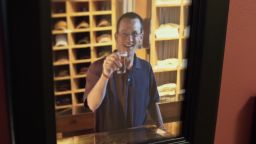
That’s when ALS patients have to make a fateful decision: whether to undergo a tracheostomy to be connected to a ventilator. It’s estimated that fewer than 10% of patients in the United States undergo the procedure, according to the ALS Association. Instead, with their intellectual faculties intact, as many as 90% of people with ALS make the decision to die.
Saling attributes the decision to a progressively diminished quality of life.
“Our society treats prisoners with more dignity and respect than the chronically disabled, kept alive but with no life,” Saling said. “I knew that I had to work quickly to avoid their fate.”
Six months after his diagnosis, Saling was walking with a cane. He feared that if he didn’t find another option quickly, he’d suffer.
Finding hope in a new home
He found hope at an ALS symposium outside Boston where he met Barry Berman, the CEO of the Chelsea Jewish Foundation, an assisted-living facility in Massachusetts. Berman was developing a new kind of nursing home that he called a GreenHouse, specializing in the care of young people with disabilities, particularly ALS and multiple sclerosis.
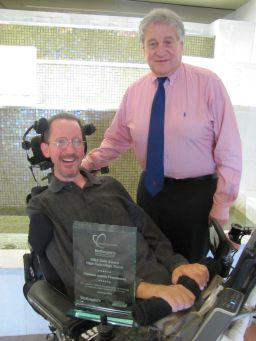
Many details remained to be worked out, but Berman and Saling made an immediate connection. A few months later, Saling moved into one of Berman’s assisted-living facilities.
“As we got to know Steve’s ability with technology and his knowledge as an architect, it just became a natural progression that he would provide the expertise and knowledge to get all the technology in the house,” Berman said.
With a grant of $500,000 from Berman, Saling went to work. He started by designing an electronic automation system called a Promixis Environment Automation Controller, or PEAC. The system uses a wireless signal to allow Saling and other patients to open and close doors, call an elevator, and operate the TV and lights. They carry out these tasks with small movements of their eyes – or, for some patients, using brain waves.
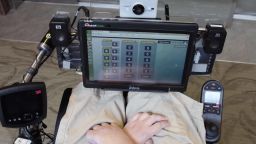
Saling laid out the facility to maximize social interaction and designed the garden with a reinforced layer so wheelchairs wouldn’t damage the lawn. His goal was to create a nursing residence that felt like home.
The Steve Saling ALS Residence opened in Chelsea in February 2010, the first long-term care facility designed for people with the disease. It’s also the only facility where people on ventilators can get out of bed every day and leave the building, going to museums or baseball games.
Most important, the residence allows residents to maintain almost-normal relationships with family and friends, who are welcome at any time.
“They are encouraged to come and have their meals and stay overnight and be an integral part of the house; it’s part of the GreenHouse philosophy,” Berman said.
‘I can’t imagine enjoying life more’
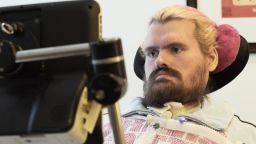
Saling’s housemates include Patrick O’Brien, a filmmaker whose documentary on having ALS won the Audience Award at the Tribeca Film Festival. O’Brien still directs films from his electric wheelchair. There’s also Dustin Howes, a college professor of political science at Louisiana State University, and Tony Epifani, a former professional soccer player, who lives in the Dapper McDonald House, a second ALS residence opened by the Chelsea Jewish Foundation in January.
They spend their days navigating the GreenHouse in their wheelchairs, sitting in the yard Saling designed and staying up late talking about politics and sports. The residence is funded partially by MassHealth, Massachussetts’ version of Medicaid. The rest of the costs are covered by donations from the Chelsea Jewish Foundation, leaving Saling and his friends to live comfortably and securely with 24-hour care.
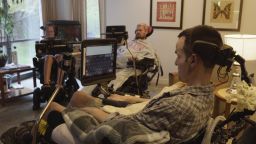
Saling has given hundreds of tours to people all around the world. He’s also started an organization, the ALS Residence Initiative, to encourage the development of similar homes nationwide.
He’s well aware of the mental and physical challenges of ALS, especially when it comes to developing a normal relationship with his son, who’s now 10 years old. Recently, Saling went to Finn’s fourth grade class to make a presentation about disabilities. It was a proud moment for Saling. Moments like that remind him how happy he is to still be alive.
“Don’t make the mistake that all of my doctors did and assume that because I am 100% dependent on the care of others for the rest of my life, that I don’t have a quality of life,” Saling said. “I can’t imagine enjoying life more.”
